7 Heat-Loving Flowers That Blaze With Color All Summer Long – Even When the Rest of the Garden Wilts
Keep your garden vibrant through the hottest months with these stunning, sun-loving blooms that thrive when others can't take the heat.
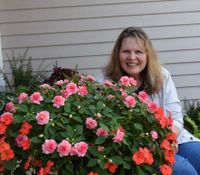
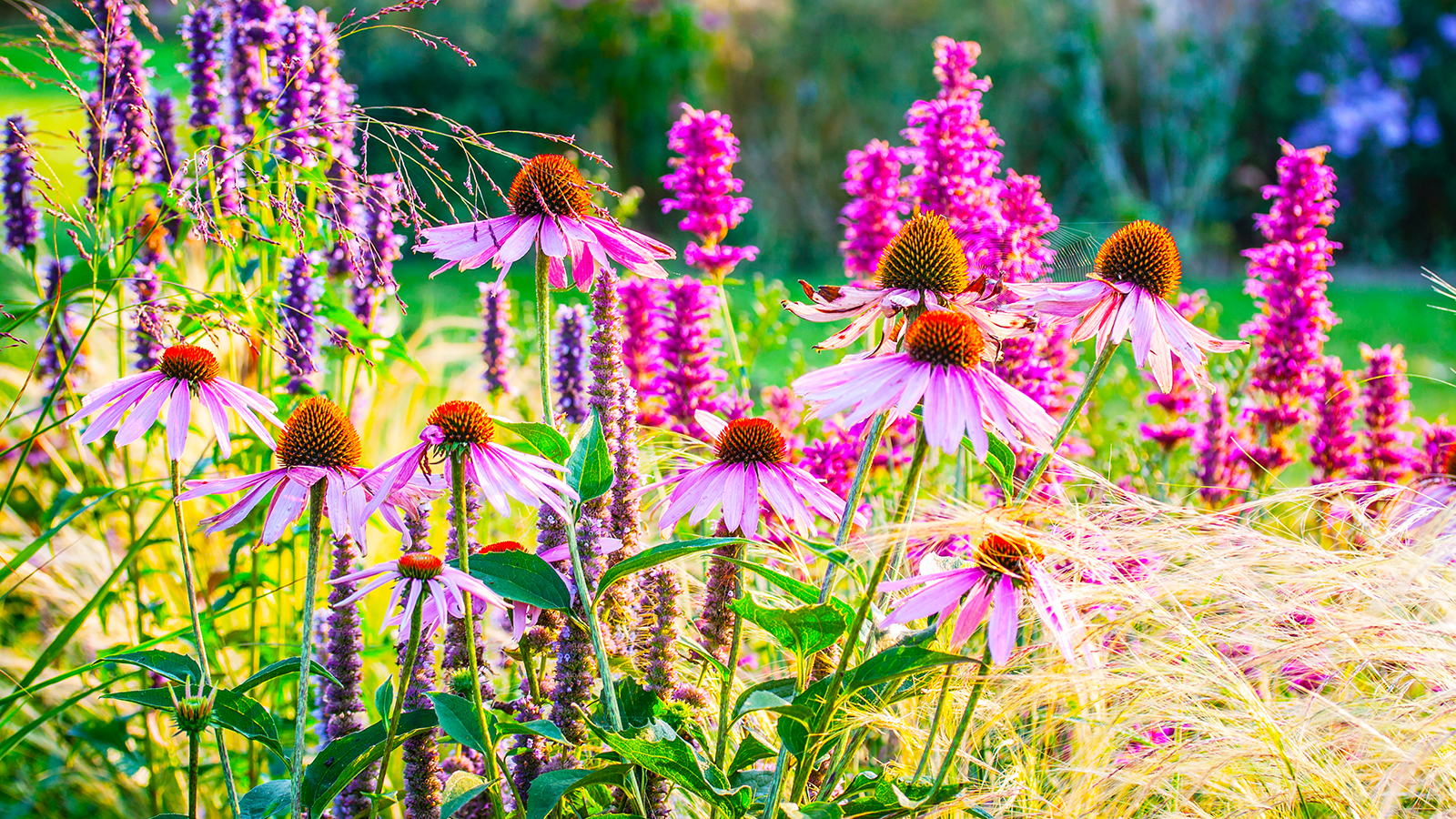
Choosing plants that bloom all summer, even when temperatures soar, can keep your garden looking lively and colorful all season. If you live in an area where part or all of the summer can reach a scorching level, add some of these flowers as a mainstay to your garden beds.
Plants that thrive in heat can dress up an area where people congregate in the summer, such as on a back porch, near a pool, or by the barbecue grill. If you choose perennial flowers that are not hardy in your USDA zone, you can plant them in containers to bring inside for the winter, or just treat them as annual flowers.
Here are seven heat-loving plants with a long bloom season.
1. Butterfly Weed
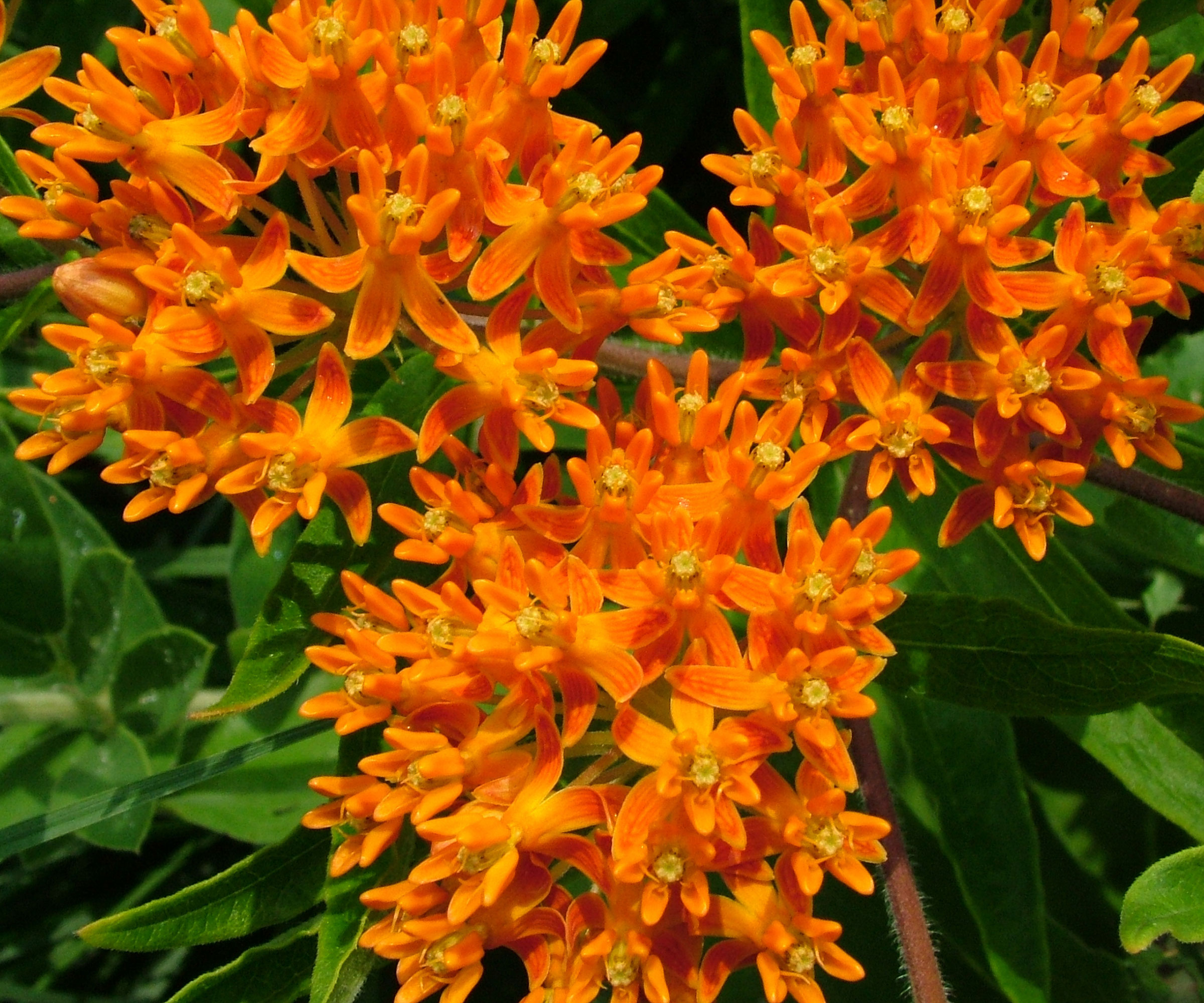
Butterfly weed (Asclepias tuberosa) is not bothered by heat or humidity and blooms on and off all summer with showy, bright orange clusters of flowers. It is drought-tolerant and works well in pollinator gardens, xeric gardens, native plant gardens, or in a perennial border. It’s also a milkweed host plant for the monarch butterfly and a nectar-rich plant for bees, butterflies, and hummingbirds.
It's easy to start butterfly weed from seed in late fall or early spring – try these Survival Seeds' non-GMO butterfly weed seeds from Amazon. Plant in a full-sun location in well-drained soil in USDA zones 3 to 9.
2. Crossandra
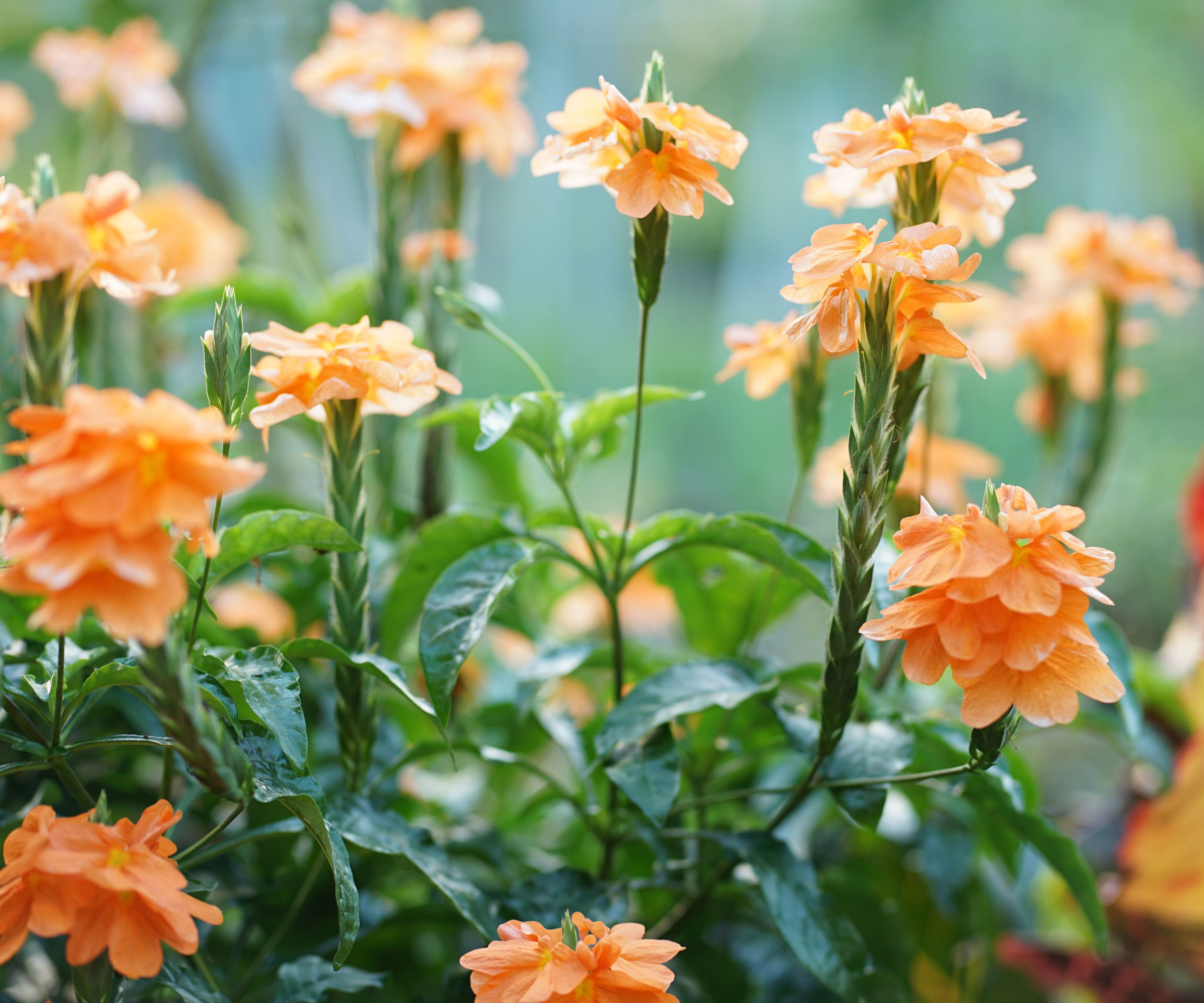
Crossandra (C. infundibuliformis) loves heat and produces bright orange or salmon “stacking” flowers all summer. This underused tropical perennial is at home in a container or in the ground, along a border or as an accent. Its glossy green leaves shine next to the overlapping flower petals.
Crossandra thrives in the heat and humidity but cannot survive a cold winter. In cooler zones, bring it inside when temperatures fall, where it will continue to bloom if it receives enough light. Then move it back outside when spring frosts are over. If in USDA zones 10 to 11, you can plant Crossandra in sun to part shade in well-draining soil amended with organic matter.
Sign up for the Gardening Know How newsletter today and receive a free copy of our e-book "How to Grow Delicious Tomatoes".
This Tropical Plants of Florida 'Orange Marmalade' crossandra, available at Walmart, thrives in a full-sun location.
3. Catmint
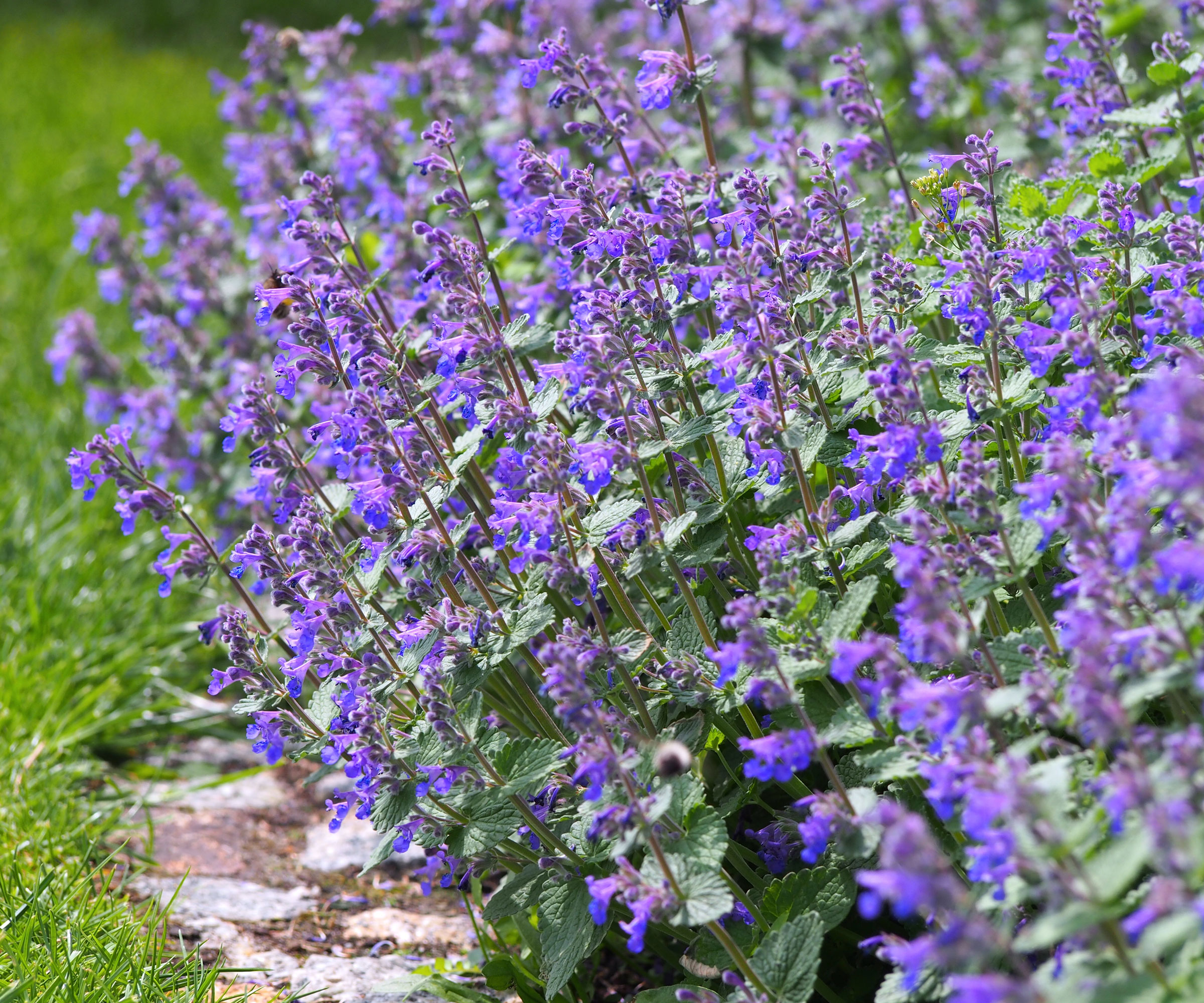
Catmint (Nepeta x faassenii) is a fragrant herb with small, lilac to purple flowers all along the sprawling stems. It defies heat and blooms from spring to summer. Shearing after flowering may bring a fall bloom. Site it where you can enjoy the scent, such as near a patio or on the edge of a border. Cats are attracted to the aroma and may roll in the clump. Plant it in full sun to part shade in well-drained soil in USDA zones 3 to 9.
This Proven Winners 'Cat's Meow' catmint, available from Green Promise Farms via Amazon, has a more refined growth habit than other varieties, standing strong with no flopping.
4. Coral Fountains
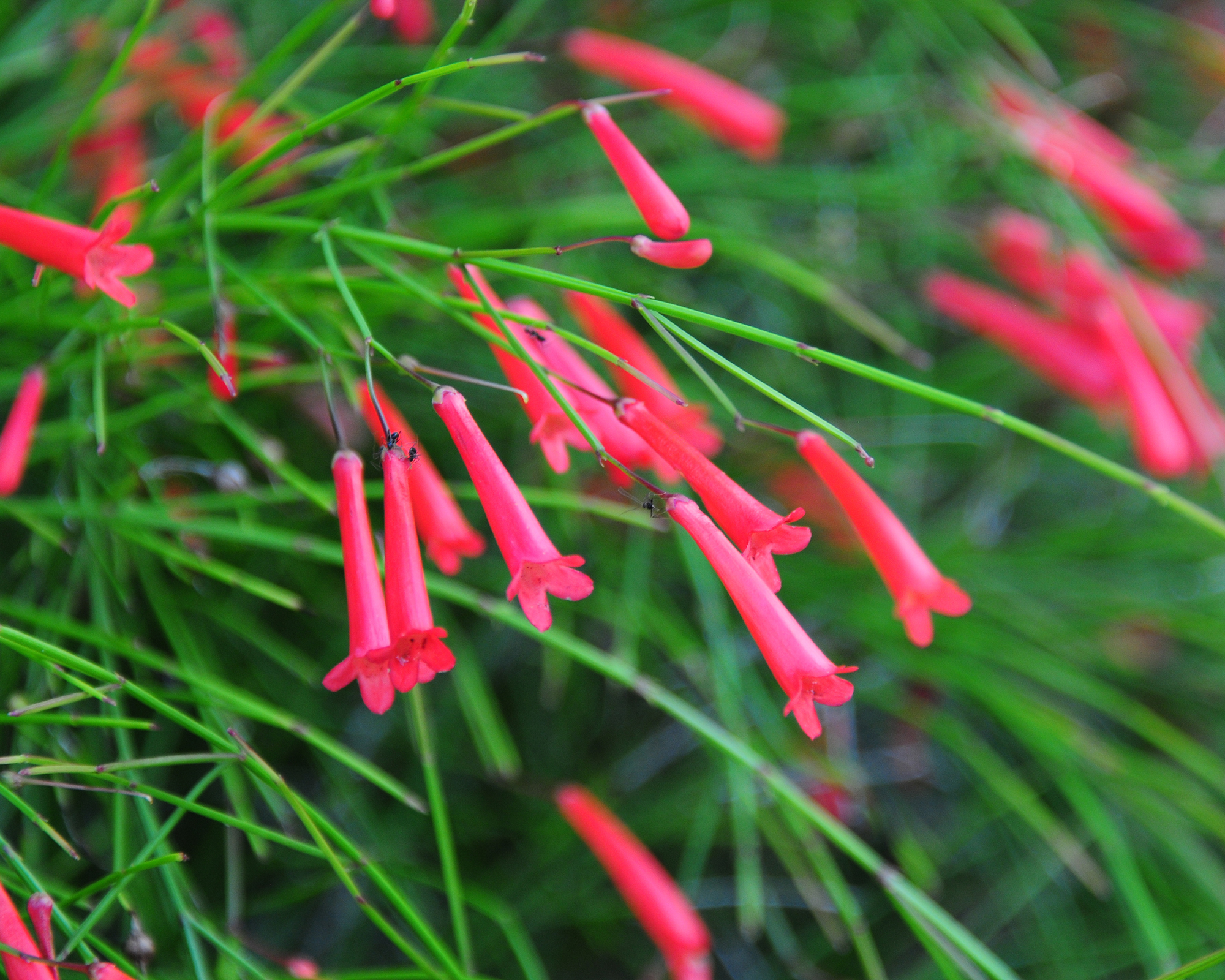
Coral fountains (Russelia equisetiformis dwarf form) – also known as firecracker plant – is a heat-loving hummingbird magnet with needle-like green leaves and reddish tubular flowers on arching stems. Containers and hanging baskets show off its flowing habit and profusion of flowers, and it will bloom till frost. If you live where winters are cold, you can bring it inside and treat it as a houseplant or store it dormant in a dark, cool place. Plant it in well-draining soil in full sun in USDA zones 9 to 11.
This set of three large gallon-size firecracker plants from Walmart is the perfect quantity to fill out pots and borders.
5. Agastache
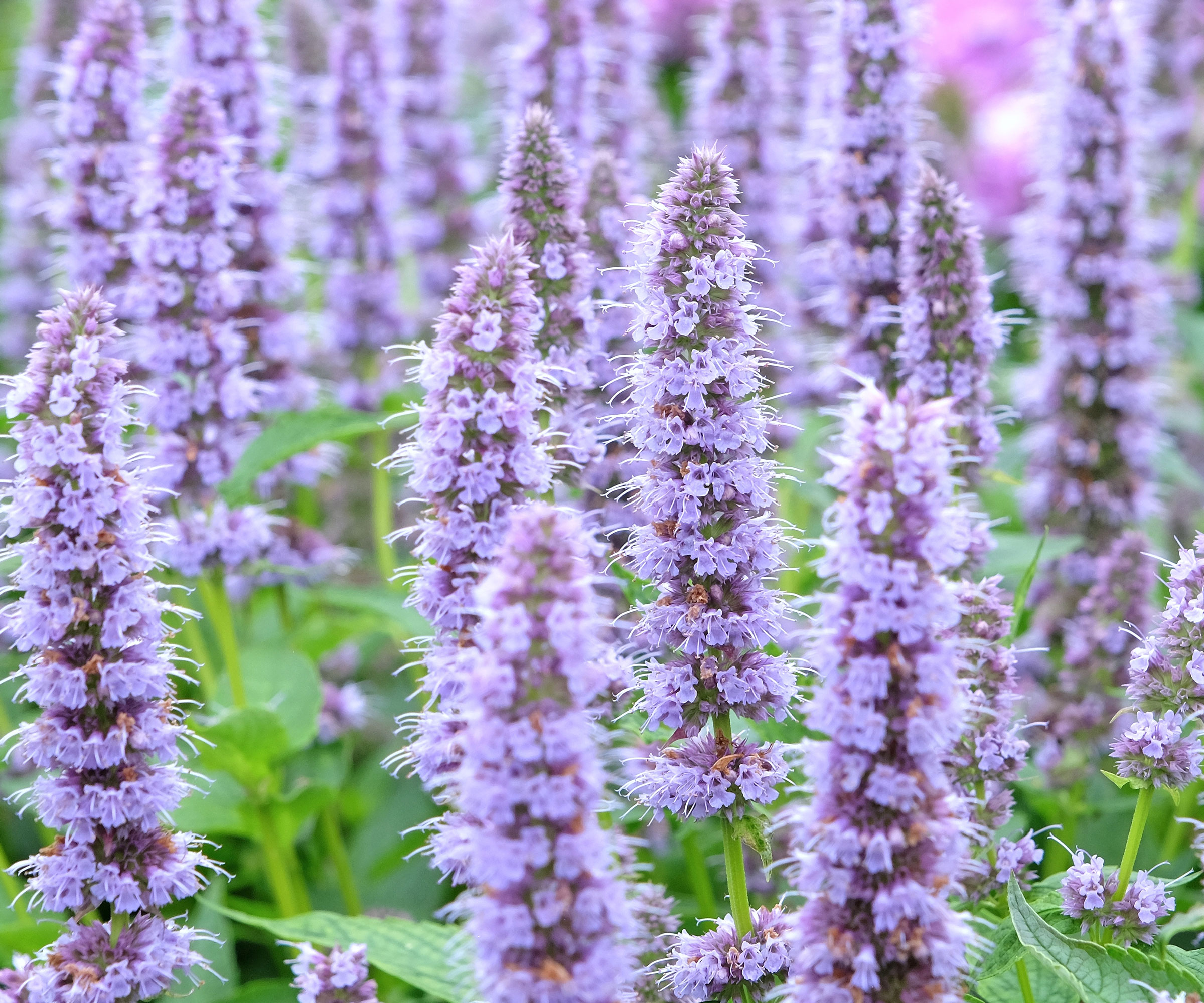
Agastache – commonly known as hummingbird mint or hyssop – is a US native that is a staple in butterfly or pollinator gardens. Its flowering spikes of orange, purple, red, white, or blue are heat and drought-tolerant.
‘Blue Fortune’, available from Greenwood Nursery via Amazon, and ‘Blue Boa’, available from Nature Hills, plus the Acapulco group, perform the best in extreme heat.
Hummingbird mint blooms most of the summer and welcomes scores of bees, butterflies, and hummingbirds for its nectar. Well-drained soils are a must for agastache as it abhors wet feet, especially during the winter. It is hardy in USDA zones 4 to 8.
6. Purple Coneflower

Purple coneflower (Echinacea purpurea) is native to the Central and Eastern US and is a tough perennial with a long bloom season from midsummer to fall. Its purplish-pink flower petals droop from a central disk that contains the seeds, which attract birds. Its stiff stems can reach 2 to 4 feet tall (0.6 to 1.2m). Pollinators seek the nectar, and bees nest in the hollow stems.
Many cultivars offer new shapes and colors, such as red, orange, and yellow, which work well in pollinator gardens, native gardens, cottage gardens, or mass plantings.
Purple coneflower is easy to grow from seed in early spring – try these seeds from Back to the Roots, available on Amazon. Plant in full to part sun in well-drained soil in USDA zones 3 to 8.
7. Tickseed
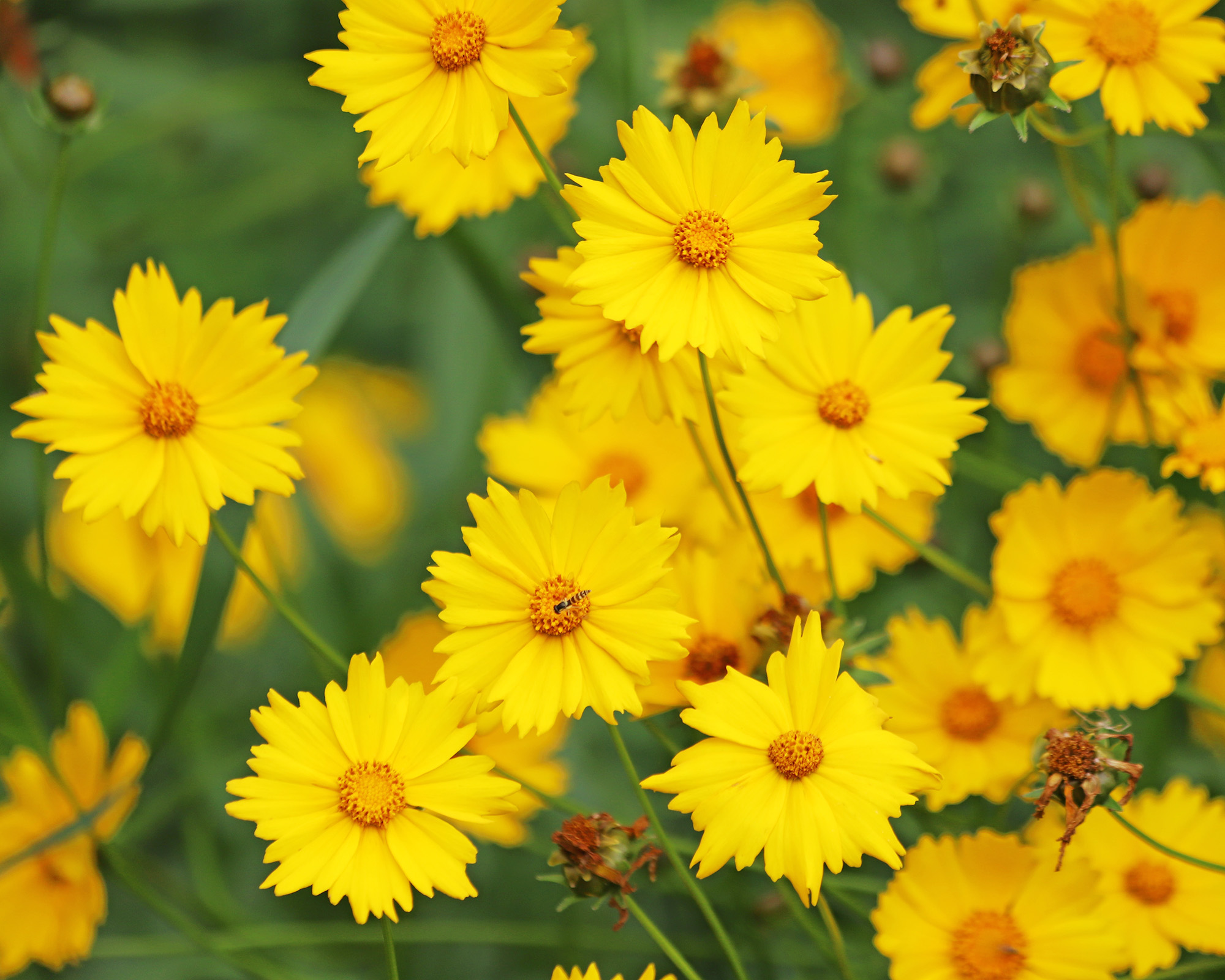
Tickseed (Coreopsis spp.) native varieties bloom from late spring to late summer with cheery yellow, daisy-like flowers. Newer cultivars increase the color options from pink to red to burgundy, as well as bicolors, and the length of bloom varies with the cultivar.
Try this Dwarf Coreopsis Plains Wild Flower Seed Collection from the Carpet Creeping Store, via Amazon. They brighten up ornamental beds, pollinator gardens, and cottage gardens. Coreopsis thrives in full sun and well-drained soils in USDA zones 4 to 9.

After graduating from Oklahoma State University with a degree in English, Susan pursued a career in communications. In addition, she wrote garden articles for magazines and authored a newspaper gardening column for many years. She contributed South-Central regional gardening columns for four years to Lowes.com. While living in Oklahoma, she served as a master gardener for 17 years.